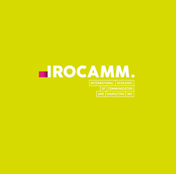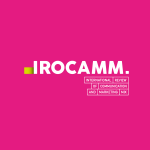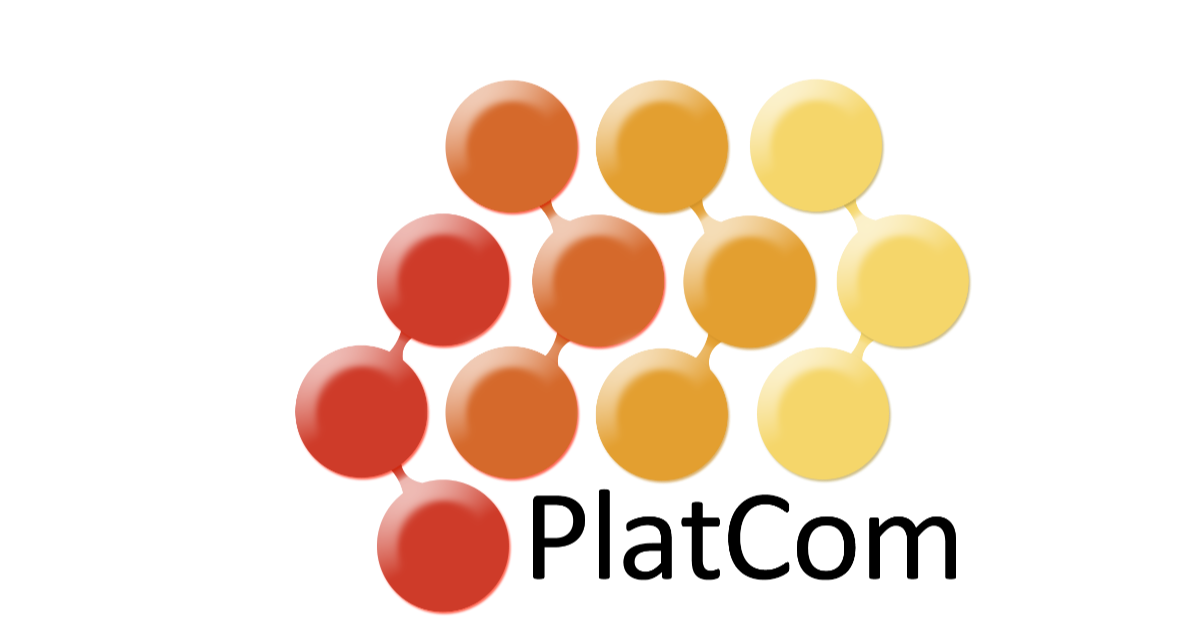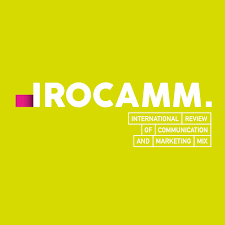IROCAMM
[Artículo] The impact of digital influencers on adolescent identity building
Autores: Thalita Lacerda Nobre, Luciana Pereira Abrantes, Carla Carolina Silva
Nowadays, the use of information and communication technologies has generated significant social, economic and cultural changes. This paper aims to address the impacts of digital influencers on the identity construction of adolescents. The method used for this research was qualitative and exploratory, with data collection through bibliographic survey. In order to reach the goal, the paper discusses three fundamentals: the technology scenario and its development; the process and characteristics of adolescence and the relationship of the virtual world with young people in today’s urban societies. It also points out how adolescent may be psychically vulnerable when interacting excessively with digital influencers, demonstrating a relationship permeated by consumerism, individualism and superficial relationships. To discuss these issues we consulted authors of psychoanalytic theory and also sociologists who portray modern society as Guy Debord and Zygmunt Bauman.
Recuperado de: https://revistascientificas.us.es/index.php/IROCAMM/article/view/10984
[Artículo] Análisis de representaciones sociales en la editorial de crónica roja producido en ecuador
Autores: Rosa Raquel Carpio Miranda, Laura Sofía Medina Andrade, Edmundo Guillermo Córdova Durán
La presente investigación tiene como propósito analizar la construcción del imaginario y la representación social de la crónica roja: en idea de que el sensacionalismo es una de las características de la prensa escrita presente en contenidos explícitos, tales como, hechos de violencia, sufrimientos y catástrofes; por lo tanto, la comunicación es directa con el lector, está provista de imágenes y textos que tienen por objeto generar el mayor impacto visual.
Cabe destacar que la publicación de sucesos cotidianos, políticos y hasta judiciales, contribuyen a la construcción del imaginario social y de sus representaciones: símbolos, creencias, valores, ideas y apreciaciones; que están integradas a la formación cultural según su localidad. A mayor impacto, mayor afluencia de lectores de diarios sensacionalistas o de crónica roja habrá en interés. El análisis mediante los métodos de investigación descriptiva y explicativa, se emplearán para el determinar los elementos que influyen en la representación social, y cómo se construye la comunicación sensacionalista.
Recuperado de: https://revistascientificas.us.es/index.php/IROCAMM/article/view/11046
[Artículo] Design inclusivo de interface de aplicativos dirigidos a analfabetos funcionais
Autores: Darlan Rodrigues Martins, Marilene Santana dos Santos Garcia, Helbe Heliamara Herarth, Ana Cláudia Maciel
Neste artigo, destacamos aspectos de uma investigação que busca construir um design inclusivo, o qual possa apoiar o desenvolvimento de um protótipo de aplicativo destinado a melhorar os níveis de escrita e leitura de analfabetos funcionais – do nível rudimentar. Este estudo é o resultado das ações realizadas no Grupo de Estudo «Educação híbrida, metodologias e objetos de aprendizagem digital em ambientes de mobilidade», do Mestrado em Educação e Novas Tecnologias – de uma instituição privada brasileira de ensino superior. A ideia é elaborar pressupostos de design de inclusão que possam direcionar a criação de um aplicativo com funções que abranjam o perfil e a condição de analfabetos funcionais, os quais têm carências de competências em leitura, têm baixa autoestima para enfrentar o desafio de aprender, e apresentam deficiências operacionais para o uso de dispositivos móveis e seus aplicativos. A metodologia aplicada neste estudo baseia-se no levantamento de narrativas pessoais desse público-alvo, que revela necessidades de comunicação verbal, as quais podem ser planejadas de maneiras interativas no design do aplicativo. Os autores que suportam este estudo têm trabalhado com conceitos de gamificação, design instrucional, cognição, aprendizado mediado por interfaces móveis, entre outros, como Concepción (2016), Santana et al. (2012) e Garcia (2016).
Recuperado de: https://revistascientificas.us.es/index.php/IROCAMM/article/view/11014
Irocamm ya está en Latindex

Intenational Review Of Communication And Marketing Mix (IROCAMM) ya aparece en Directorio, Catálogo 2.0 y Revistas en línea de Latindex. La revista de comunicación social cumple 37 de 38 criterios.
Esperamos que este avance sirva a sus autores en sus carreras investigadoras.
IROCAMM – International Review Of Communication And Marketing Mix es una revista científica digital cuyos objetivos son la difusión de artículos científicos sobre comunicación comercial y corporativa, así como marketing y estudios de mercado (incluyendo las 4 variables del mk mix: Producto, Precio, Comunicación y distribución).
Latindex es un sistema de información académica especializado en revistas académicas editadas en Iberoamérica, sin fines de lucro y de consulta gratuita. Además ofrece información sobre revistas de vocación latinoamericanista editadas fuera de la región.
[Artículo] El desarrollo del terrorismo contemporáneo en Siria contado a través de las caricaturas árabes
Autora: Salud Adelaida Flores Borjabad

Los grupos terroristas en Siria tras el desarrollo de la guerra civil han cobrado gran protagonismo en el ámbito comunicativo. No obstante, la imagen que se ha desarrollado engloba a toda la sociedad árabe e islámica de una forma hostil. Sin embargo, el desarrollo de la caricatura ha mostrado una visión alternativa al desarrollo del terrorismo, ya que se ha convertido en un medio de comunicación alternativo. Por ello, este trabajo pretende analizar y estudiar el desarrollo del terrorismo en Siria tras el desarrollo de la guerra civil, así como también observar como se ha plasmado en las caricaturas como medio de comunicación. Para ello, se ha llevado a cabo una metodología cualitativa en la que se han ido analizando documentos, así como caricaturas que reflejen el desarrollo del terrorismo antes y después de la guerra civil en Siria. Del mismo modo, se ha desarrollado un método visual etnográfico que permita una descripción exhaustiva de las caricaturas seleccionadas para este trabajo. Este sentido, se trata de reflejar como la imagen de la sociedad árabe e islámica se ha visto transformada por el desarrollo de la guerra civil siria y su forma de transmitirla en los medios de comunicación tradicionales. Pues, la única forma de comunicación que transmite una visión real del conflicto y la situación es la caricatura, en tanto que es un arte social y colectivo que narra el verdadero sentimiento de no sentirse identificado con estos grupos terroristas.
Recuperado de: https://revistascientificas.us.es/index.php/IROCAMM/article/view/102-114
[Artículo] Communication and advertising in NGDOs: present and future
Autora: Aránzazu Román San Miguel

Non-Governmental Organizations for Development (NGDOs), as part of the Third Sector, coexist in society with large business conglomerates, trade unions, public entities, etc. that use communication to improve their bottom line, whether tangible or not. New technologies and the Internet are becoming indispensable tools to reach audiences, increasingly influenced by social networks, work, blogs, and so on. At a time when solidarity is more necessary than ever and administrative support is diminishing, NGDOs need to communicate what they do and how they do it, because their survival and that of those they assist is at stake. This paper seeks to highlight the lack of communicators in NGDOs throughout their existence. It shows that today most NGDOs still do not have expert communication officers, but they do have digitally trained people in their ranks in order to make themselves known and attract the attention of their target audiences. It seems that in the not too distant future communication will become a fundamental pillar for social entities.
Recuperado de: https://revistascientificas.us.es/index.php/IROCAMM/article/view/95-101
[Artículo] How the digital age has changed the corporate communication world: the case of Digital Marketing in the Fashion Business
Autores: Irene Garcia Medina, Pedro Alvaro Pereira Correia, Leonor Alberola Amores

Digital Marketing have revolutionized the way companies communicate and interact with their publics, in particularly in the Fashion Business. The use of digital communication on a daily is increasingly intense, which leads companies to work the digital business strategy around the objectives, as well as incorporating digital methods into the objectives. According to Hamel, “The advantage of the competitiveness comes from a technological introduction and the constant adaptation along the time to the technological evolution inserted in the strategy of the organization.”
This research is a qualitative analysis to understand what are the digital factors that contribute to sustainable competitive advantages of organizations which can support strategic and future actions.
Recuperado de: https://revistascientificas.us.es/index.php/IROCAMM/article/view/87-94
[Artículo] Las noticias falseadas y la labor de los profesionales de la información en la cobertura de sucesos
Nuria Sánchez-Gey Valenzuela

En este artículo hemos querido analizar el aumento de noticias falseadas o fake news y su relación con la labor de los periodistas televisivos en la cobertura de sucesos. La realización de este estudio queda justificada ya que este hecho puede no sólo influir en la labor periodística, sino en las informaciones que llegan a los espectadores y a su concepción del mundo. Para el estudio hemos utilizado metodológicamente el enfoque estructural y el empirismo profesional. Dentro de los principales hallazgos queda demostrado que las noticias falseadas esconden intereses que están por encima del margen de maniobra que tiene el periodista de a pie para evitarlas. Asimismo, las empresas televisivas -que son las que controlan finalmente qué informaciones dan o no- deciden incluir noticias falseadas por el beneficio económico que pueden conllevar. Estas noticias falseadas están afectando al derecho fundamental de los ciudadanos españoles y por tanto desvirtuando el papel de los medios de comunicación y, en concreto, la función social que los periodistas tienen encomendada. La mayor limitación de este estudio es que los profesionales que han formado parte de él trabajan para un medio de comunicación y este hecho ha podido condicionar su participación.
Recuperado de: https://revistascientificas.us.es/index.php/IROCAMM/article/view/74-86
[Artículo] La marca personal y profesional en la economía de la reputación
Autora: Isabel Iniesta-Alemán

La reputación es el verdadero territorio en el que hoy compiten todas las organizaciones. Sin embargo, muchas agencias de publicidad no muestran los perfiles profesionales de sus directivos en la comunicación de su empresa. En nuestra investigación nos planteamos que esto ocurre, quizá, porque es una información que no aprecian los anunciantes al seleccionar a su proveedor de servicios de publicidad y comunicación. Otro supuesto que analizamos es que muchas agencias no tienen, en su equipo directivo personas cuya formación o historial profesional no sería suficiente como para competir abiertamente con otros directivos de agencia. Como metodología utilizamos la triangulación metodológica.
Recuperado de: https://revistascientificas.us.es/index.php/IROCAMM/article/view/61-73
[Artículo] Are the spin doctors a figure of priority interest for public relations?
Autores: Sandra Vilajoana Alejandre, Toni Aira

This research has a twofold goal: on the one hand, it describes, from a theoretical point of view, the importance of the figure and role of the spin doctors, also known as communication political advisers, from the perspective of public relations; and by another, the article analyses quantitatively and qualitatively, the presence and treatment of the figure of the spin doctor in the main academic journals included in the Journal Citation Reports in the fields of communication, public relations and political communication from de point of view of public relations discipline. The results of the research confirm the notable influence of public relations in the origin, definition and professional activity of spin doctors. By contrast, this study shows the low presence of the spin doctor concept in the academic literature, although the articles analysed confirm the importance of this figure from the point of view of public relations.
Recuperado de: https://revistascientificas.us.es/index.php/IROCAMM/article/view/50-60

